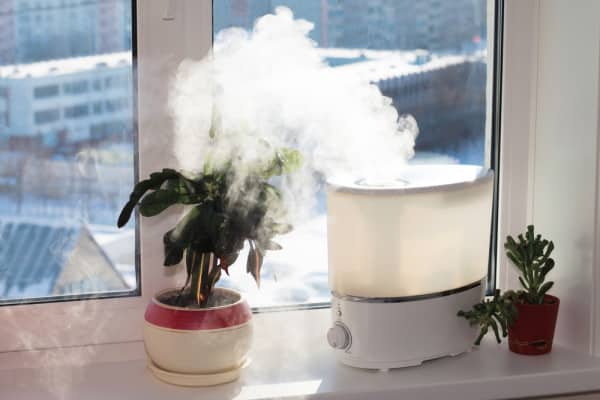Dry air often compromises your family’s comfort during the winter months, but this can also be a year-round problem. Fortunately, it’s one that’s easy to address. If your McKinney, Texas, home feels uncomfortably dry, try these seven ways to humidify the air.
Seal Your Home
Many homeowners approach seals and weatherstripping as a way to keep out cold in the winter or heat in the summer. Adequate seals will do much more than just help your home stay at an appropriate temperature, though. Adding seals and weatherstripping will also help you maintain a comfortable level of humidity.
Start by searching for drafts around places like door frames, windowsills, and electrical outlets. Be sure to check the openings where utilities, cables, and phone lines enter your home, too. Once you’ve located drafty areas, seal them off with caulk or weatherstripping to keep the humidity right where you want it.
Cook on the Stove
If you’re like most McKinney homeowners, cooking is a typical part of your everyday life. You might not realize how much this activity can affect humidity levels in your home, but cooking can have a big impact on your family’s comfort.
Whether you’re boiling water, cooking a big pot of sauce, or using the slowcooker, you’re adding moisture to your home’s air. To humidify the indoor air even more, plan dishes that take considerable time to cook, and opt for the stovetop over the oven. Since the oven can pull moisture from the air, using the stove is a smart choice.
Rethink Your Cleaning Routine
Like cooking, cleaning can affect comfort levels in your home in a big way. With a little preplanning, it’s easy to add moisture back into the air as you clean. When you use running water to clean the shower, sink, floor, or any other surface, be sure to keep the doors open to let the moisture circulate.
Time Your Showers and Baths
Taking long showers and baths can dry out your skin, but letting the water run can do wonders for moisture levels in your home. Fortunately, you can humidify the indoor air without overdoing it on bath time or running up your water bill. After a bath, simply leave the water in the tub and open the bathroom door. Let the bath water evaporate for as long as possible to increase moisture levels in the air.
Arrange Houseplants
As natural sources of moisture, houseplants excel at regulating humidity levels. In fact, plants actually move moisture from the soil into the air. Take advantage of this ability by placing potted plants throughout your home. Be sure to water or mist them regularly in order to keep them healthy and maintain the humidification cycle.
Distribute Water Throughout the House
If you don’t have time for houseplant upkeep, try distributing decorative vases throughout your home instead. Fill them with water, and place them near your cooling or heating vents. When the HVAC system forces conditioned air through your home, the air will pass right over the water-filled vases and increase moisture levels.
Install a Humidifier
When you constantly deal with dry air indoors, a whole-home humidifier is usually the most effective option. A humidifier works with your home’s HVAC system to keep moisture levels comfortable and healthy year-round. With a whole-home humidifier, your family’s home can feel cozy and comfortable whether you’re turning up the heat in the winter or cooling down with the air conditioner in the summer. Many humidifiers even allow you to adjust the device to meet your family’s humidity needs in any season.
You can make significant improvements to your home’s air quality on your own, but sometimes professional help is necessary. When it’s time to call in the experts, contact Bill Joplin’s Air Conditioning & Heating, your local HVAC specialists, at 888-414-4655.





